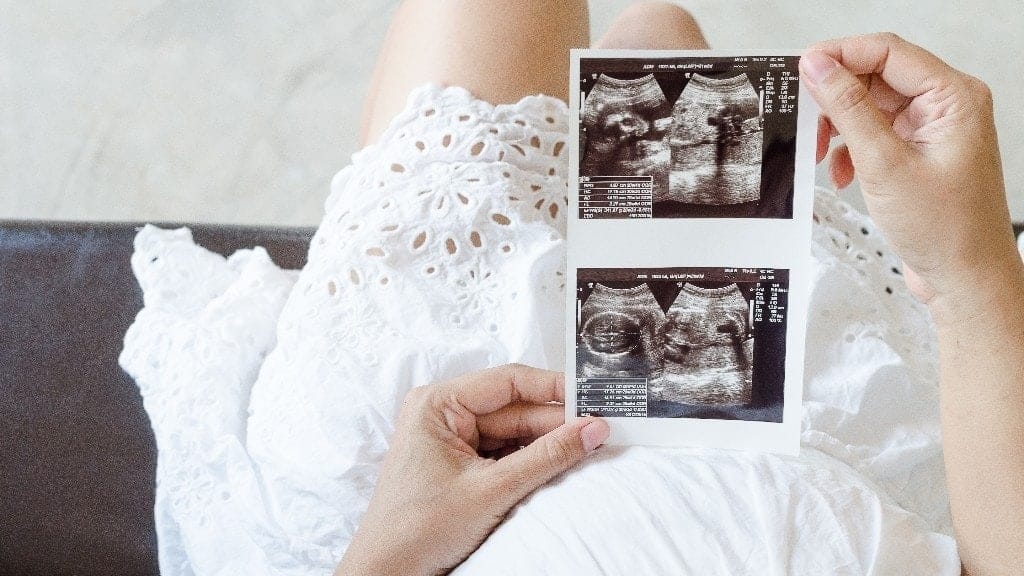Spotting, fatigue + all that morning sickness: 10 common pregnancy symptoms

And how to deal with them
If you’ve had the thought,
How is it possible that the tiny human I am growing has the ability to make me feel so sick?!
—you’re not alone.
Almost every pregnant woman
experiences at least some unpleasant symptoms, especially in her first trimester.
Here are some of the most common pregnancy symptoms, why they happen and what you can do about
them.
Rhinitis
The deal:
Rhinitis is a
fancy term for a
perpetually stuffy nose
—and it can be just plain annoying.
We actually don’t fully understand why this happens, though we suspect those pesky hormones again,
and the general swelling that happens during pregnancy.
Try this:
Sleep with a cool mist humidifier running, use saline drops and drink a lot of water. Some women
need to be put on medications for this, so be sure to talk to your health care provider if it’s bad
(you’ll also want to make sure that a sinus infection isn’t causing all of the yuckiness).
Milky white discharge
The deal:
Vaginal discharge, or
leukorrhea
, is very normal during pregnancy. If it’s clear or milky white, odorless and you’re not
experiencing pain or itching, it’s probably normal.
Try this:
Just wear a pantyliner to help you stay comfortable (we also recommend cotton underwear and
loose-fitting clothing to help prevent problems). If you do have pain or itching, if the discharge
smells bad (like fish), or if it’s green, yellow or looks like cottage cheese, you may have an
infection that requires treatment by your midwife or doctor.
Fatigue
The deal:
Cue “welcome to the next 18 years of your life” joke here (that’s not true, btw—you
will sleep again, we promise).
But
pregnancy fatigue
is the real deal. It’s caused by the hormones and physical changes required to grow a baby (or in
the words of Sofia Vergara on
Modern Family
, because you are “turning food into a human”).
Try this:
To help combat fatigue, make sure you rest whenever you can, eat a healthy diet and get some
exercise
to increase your stamina and overall energy.
Cramping
The deal:
Early pregnancy cramping
can feel a lot like the cramps you get with your period. It’s caused by your growing uterus, and
sometimes constipation or gas.
Try this:
To decrease cramping, try lying down on your side or drinking more water. If the cramping lasts for
a long time or is accompanied by blood, call your midwife or doctor.
Frequent urination
The deal:
Women who are far along in their pregnancy often spend a ton of time in the bathroom because their
growing baby puts pressure on their organs (and oh, those kicks to the bladder). But many women
find that they start peeing frequently right from the start, thanks to hormones and kidneys that
are now working extra hard.
Try this:
It can be tempting to want to drink less water to avoid having a full bladder, but
this can worsen your symptoms
, because you can become dehydrated and even develop a UTI. So drink up (water and juice) and let
your medical provider know if you experience burning with urination or have blood in your urine.
Headaches
The deal:
Headaches
often happen when a pregnant woman is dehydrated, tired or has low blood sugar.
Try this:
The best way to prevent or treat a mild headache is to drink plenty of water, rest and snack
throughout the day. Talk to your doctor or midwife before you take any pain meds—some of the
medications you’re used to taking aren’t safe during pregnancy. Severe headaches could be a sign of
a bigger problem, so get medical care right away.
Spotting
The deal:
About 20% of women have a small amount of
vaginal bleeding
during early pregnancy.
It will probably make you pretty nervous to see the drops of blood, but know that many women who
have spotting end up having totally normal pregnancies. Spotting can be caused by implantation of
the egg, sex or a vaginal exam.
Try this:
If you experience spotting, give your doctor or midwife a call—they’ll want to rule out
something more serious, like a miscarriage, ectopic pregnancy or problem with the placenta.
Round ligament pain
The deal:
This feels like a really intense cramp in your groin. It happens because of the normal changes and
stretching happening to the ligaments in your lower abdomen and pelvis. You may experience
round ligament pain
when you change positions quickly (like when you get out of bed), sneeze or laugh, or if you spent
a lot of time either sitting or walking.
Try this:
Try changing your position frequently throughout the day, and stay well hydrated. If the pain lasts
for longer than a few seconds, or if bleeding accompanies it, call your medical provider.
Back pain
The deal:
Another very common pregnancy symptom,
back pain
happens for a number of reasons: Hormones loosen your joints, making them uncomfortable and more
prone to injury; your growing belly is changing your posture; and it’s just harder to find a
comfortable position.
Try this:
To help with back pain, get a massage, change your position often, apply moist heat, try prenatal
yoga and get a massage (yes, we know that’s on the list twice).
Nausea
The deal:
Morning sickness is probably the most famous (or infamous) symptom of pregnancy. Morning sickness (which can actually strike anytime, day or night), is caused by the hormonal changes happening in your body. Women tend to feel worse when they’re hungry, so try eating small, frequent snacks
throughout the day. One super-pro tip: Keep a box of crackers in the bathroom. When you wake up in
the middle of the night to pee (see #9), pop a few crackers and fight the nausea before it begins.
Try this:
Check out our list of healthy first trimester snack ideas, like bananas with nut butter and air-popped popcorn.
When nausea becomes severe (vomiting every day and losing 5% of your pre-pregnant body weight),
it’s called hyperemesis gravidarum, and it seriously sucks. This condition requires medical attention because it’s easy to become
dehydrated and experience an electrolyte imbalance. If you spend an entire day vomiting, can’t keep
down water, feel dizzy, have a racing heart or vomit blood, head to the emergency room.



































